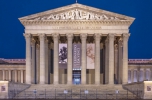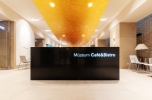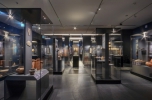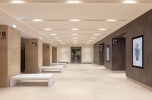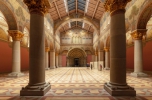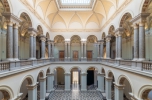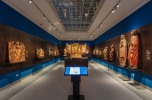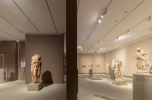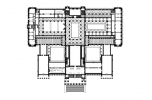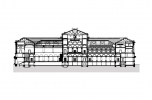Truth and Beauty
The Reconstruction Project of the Museum of Fine Arts in Budapest
Architect: István Mányi
Text: Miklós Sulyok
Photos: Tamás Bujnovszky
After being closed for three years, the Budapest-based Museum of Fine Arts has been opened again on October 31st, 2018. Never has there been in the history of the building such an extensive and high-standard reconstruction realized before, so it is not an exaggeration to say that the museum has been restored to its original, century-old glory. An existing collection in an old building, reorganised according to new viewpoints. The old building however, underwent a significant technological renovation. The most significant achievement is probably the air-conditioning along the entire length of the wing on Dózsa György Road, which makes the building genuinely meet international standards. However, we should not forget about the photovoltaic panels, the modern boiler, the modernized safety and information-technology systems either. As a result of the largest-scale reconstruction of the history of the Museum, a total floor area of 15,000 m2 was renewed. Besides technological solutions, the museum now boasts of a new underground store for art works, a café and a restaurant and a new cloak-room. The halls named after Michelangelo and Schikedanz on the ground floor and the first floor respectively, are once again to house exhibitions and events. Another significant stage of the reconstruction was the comprehensive reconstruction of the Romanesque Hall which had been closed since World War II and thus has had a bare existence so far. Visitors are fascinated by the amazing architectural overall impression, breath-taking architectural sculptures and murals in this space evoking the spaces of monumental medieval basilicas.
Leading architect: István Mányi
Architects: Dániel Mányi, Gábor Kardos, Zsófia Réka Szontágh
Interiors: László Gergely
Structure: Lajos Szabó
HVAC: Gábor Szigyártó, Péter Mojzes, Attila Pitko
Public utilities: György Pernyész
Elecrical engineering: György Kapitor, Zsolt Aranyos
IT technology: István Csányi
Kitchen technology: Gizella Kurucz
Elevator: Tamás Szabó
Isolation: Miklós Vaszari
Fire protection: Sándor Venczel
Soil mechanics: Árpád Petik
Structure: Ernő Zámbó
Monument expert: Ferenc Bor
Detailed plans: Ferenc Barta
Photo documentation: József Vajda
Evaluation: Vikor Rozmann
Roads: Ádám Rhorer
Environment: Péter Balogh, József Major
Inoculum: László Tomcsányi
Lights: László Deme – Lisys-project
Rehabilitation expert: Anna Korányos
Main contractor: Magyar Építő Zrt.

